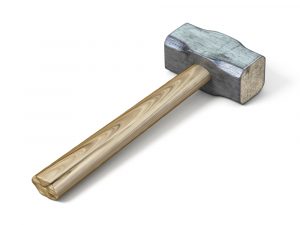 It can seem appealing to erase your own digital footprints. It’s the cartoon pleasure of sweeping a brush behind you as you walk, stopping the bad guys from following you. DIY alternatives to professional e-data destruction can seem a simple way to cut costs, but it’s more likely to lead to a breach of security. Here’s some DIY electronic data destruction methods and why we don’t recommend them:
It can seem appealing to erase your own digital footprints. It’s the cartoon pleasure of sweeping a brush behind you as you walk, stopping the bad guys from following you. DIY alternatives to professional e-data destruction can seem a simple way to cut costs, but it’s more likely to lead to a breach of security. Here’s some DIY electronic data destruction methods and why we don’t recommend them:
Emptying the bins
Emptying your digital recycling bin may seem like you are erasing data from existence but it’s more like hiding it behind a false mirror. Your operating system can no longer find the information, but it can be readily recovered using file recovery software. So it’s only worth relying on emptying your recycling bin if it contains nothing more precious than embarrassing photos of your office Christmas party.
Reformatting
Once upon a time, reformatting was considered the way to flush your old data down a black hole. But yesterday’s black hole is today’s open handbag. Reformatting is still a useful tool for repurposing, say, a home laptop so you can hand it down to a family member. But any sensitive data would be quickly retrievable with software you can download for free on the internet.
Data wiping
Sounds promising. With a name like data wiping you’d expect it to leave no trace. The process even allows you to go on using the hard drive afterwards, saving costs. But it is time consuming and most importantly, it’s fallible. Any data that is invisible to the host system is invisible to the data wiping software and will still be recoverable. Plus, if there’s any malicious code involved, the wiping process can be compromised. In other words, there’s all kinds of things that can go pear-shaped.
Hitting it with a sledgehammer
Everyone enjoys smashing things (especially if you’re the big green alter ego of an otherwise docile doctor). But while taking a sledgehammer to a hard drive is a more secure method of destruction than the previous options, it is not enough to prevent a skilled person from extracting the data with the right equipment. You may enjoy the smash the hard drive makes, but you’d also be taking a hammer to any guarantee of security. Maybe break up an old sofa instead.
Degaussing
Using a very strong electro-magnetic current does give results. So good are the results, in fact, that we do it ourselves. There are limits, however, as a degaussed hard drive looks exactly the same as an ordinary one. Quite frankly, it’s not worth trying it yourself and having any mix ups with serious sensitive data. That’s why when we handle the process with meticulous precision, recording the serial number, security-sealing already secure crates to move them. Then after degaussing (wiping data using an electromagnetic current), we shred the hard drive into miniscule metal chips that couldn’t be put back together by anything on earth. We even recycle the scrap metal, so it’s kinder to the environment too.
Having DIY skills is an admirable quality. But what no auditor wants to hear is ‘I destroyed the data myself,’ because that translates as ‘I attempted to destroy the data and I can’t prove that I did.’ Sadly, there isn’t a kind of data destruction kit that can provide you with all the necessary materials for secure data destruction.
But you do have us! And we’re lovely and we know what we are doing. We’ll even give you a Certificate of Destruction for your auditors and they will be most pleased. Get in touch with us for a free, fast and highly competitive quote.







